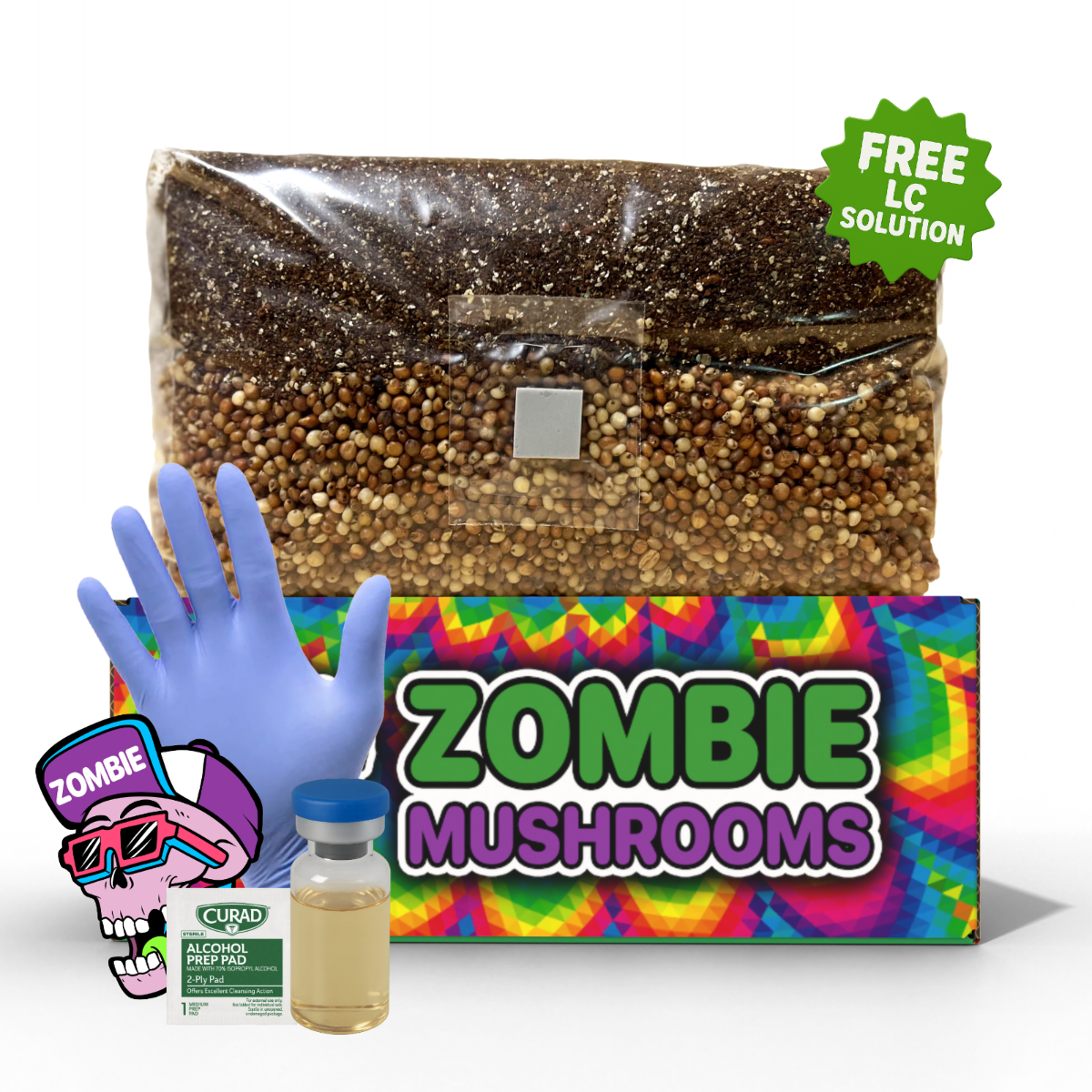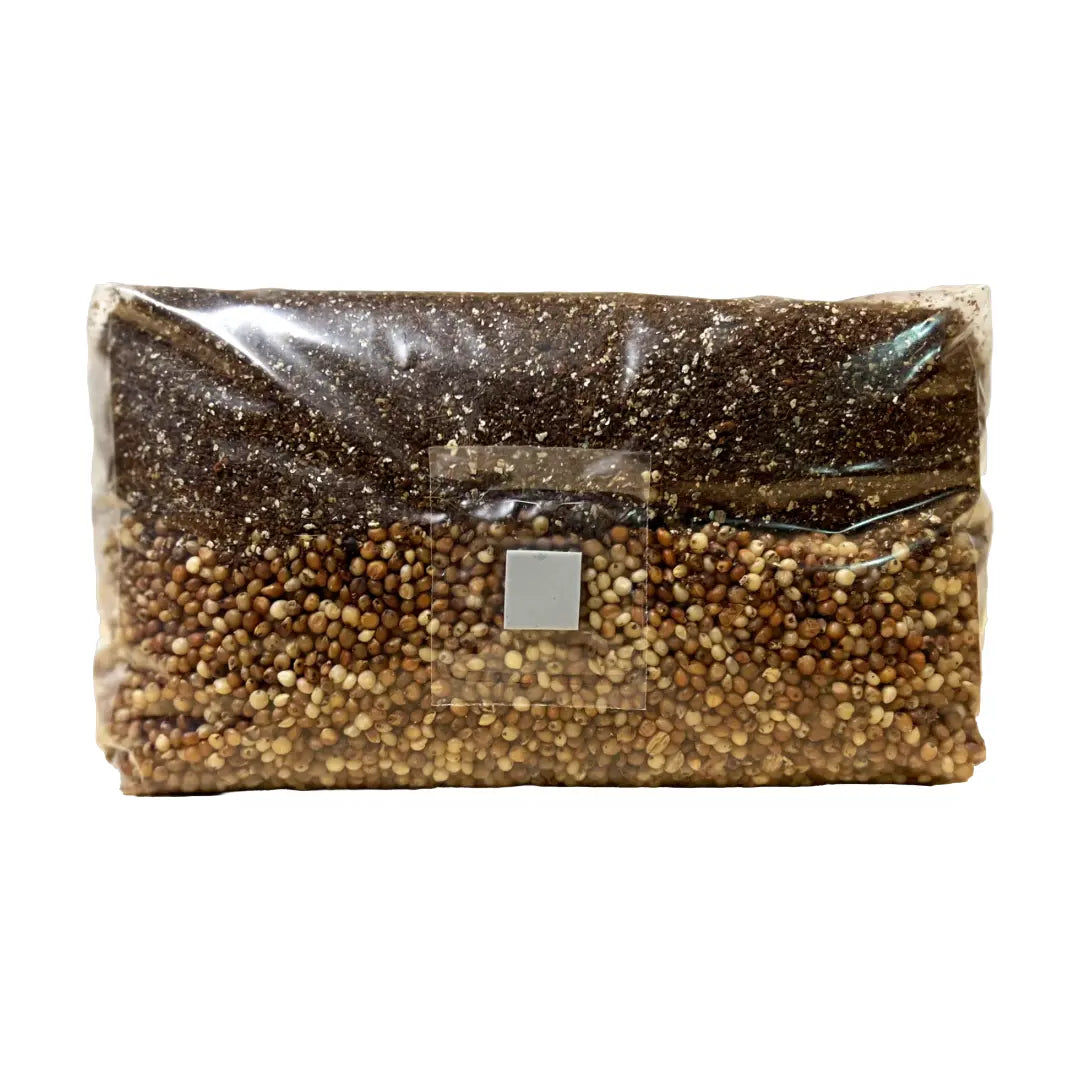- Mushroom growing kits present a simple, easy to use way for beginners to grow mushrooms at home without much trouble.
- Most grow kits will produce mushrooms pretty fast, in about 2 to 4 weeks, much quicker than starting from spores.
- Kits may cost more than do it yourself methods, but they stop contamination problems and don't need any special tools.
- Lots of kits are able to make several harvests, some giving up to 5 flushes before stopping production.
- More experienced growers are able to get more from their kits by moving mycelium to new substrate for more harvests.
What Is a Mushroom Grow Kit?
Mushroom growing kits are a beginner-friendly way to start cultivation at home—offering pre-colonized blocks, easy setup, and low risk of contamination. For those wanting more predictability and quality, using a mushroom grow bag kit gives you ready-to-use substrate in a clean, controlled format. In this article, we’ll explore whether mushroom grow kits are truly worth it, compare kit options, examine how many flushes you can expect, and look at trade-offs vs DIY methods.

Why Mushroom Grow Kits Appeal to Beginners
Mushroom grow kits simplify the cultivation process by removing many technical barriers: pre-colonized substrate, minimal tools, and no need for complex sterilization. Just water, light misting, and airflow — many kits begin pinning within 7-14 days. When paired with grow bag technology that includes filter patches, these kits deliver cleaner, more reliable results, especially for first-time growers.

Step-by-Step: Using a Mushroom Kit Properly
- Remove kit from packaging and follow instructions carefully.
- Make a small cut or open air port in the bag (if required) to allow fresh air exchange.
- Soak or mist the block to reach optimal moisture (often around 75-95% humidity)
- Maintain dampness with regular misting and ensure good airflow.
- Watch for pinning (small mushrooms) ~ 7-14 days after proper moisture and air are applied.
- Harvest the first flush in about 2-4 weeks, depending on species and conditions.

Good Things About Using a Mushroom Grow Kit
Easy for Beginners and Simple to Use
Mushroom kits don't need any past knowledge. Because the mycelium is already grown, beginners don't have common problems like getting contamination or not sterilizing properly—a big problem for new growers using spores.
Quick Growth Compared to Spores
Growing mushrooms the old way can take months before you get any mushrooms. With a kit, your first picking can be ready in only 2 to 4 weeks!
Good Chance of Success
Because the hard part—growing the mycelium—is already done, most people have a much better chance of success than when starting from nothing.
Very Few Tools Needed
A mushroom grow kit just needs water and a spray bottle. You don’t need pressure cookers, germ free rooms, or hard to use setups.
Lots of Mushroom Choices
Some of the best mushroom kits are for a big number of mushrooms you can eat and medicinal kinds, like
- Oyster mushrooms (grow fast & easy for beginners)
- Shiitake mushrooms (rich, good flavor)
- Lion’s mane mushrooms (known for helping your brain)
- Reishi mushrooms (well liked in old medicine practices)

The Top Mushroom Growing Kits for New Growers
If you’re trying a mushroom growing kit for the first time, think about one of these easy to use choices
Oyster Mushroom Kit
-
Great for beginners—strong, makes lots, and grows fast.
-
Good for growing inside—can be grown in small places.
- Can be used in many meals—tasty, light flavor good for different foods.
Shiitake Mushroom Kit
-
Well liked in Asian cooking—strong, really good flavor.
-
Makes several pickings if you take care of it fairly well.
- Needs a little more care with dampness but gives growers yummy mushrooms as a reward.
Lion’s Mane Mushroom Kit
- Different fluffy look looking like brain coral.
- Known to be good for brain and nerve health.
- Does well even when it’s not very damp, making it a nice choice for first time growers.
Button Mushroom Kit
-
Mushroom most people know from the store.
-
Grows good in trays or boxes if it’s not too dry or wet.
- A bit harder than oyster or lion’s mane but still okay inside.

How to Use a Mushroom Grow Kit the Right Way
Get Your Kit Ready
- Take the kit out of the box and read the directions—different mushrooms need different things.
- Make a small hole in the grow bag so air can get to the mycelium.
Keep Dampness Right
- Spraying water often is needed—if it’s not 75 to 95% damp, mushrooms may get too dry.
- Maybe put the kit in a dampness cover or plastic tent to keep moisture in.
Make Sure Air Can Move Around
- Mushrooms need fresh air to grow right.
- Keep the kit in a place with air flow to stop too much CO₂ from building up, which can make mushrooms long and skinny.
Keep Temperatures Good
- Most kits do best in 60 to 75°F (16 to 24°C)—if it’s colder or hotter it might slow down or stop growing.

Getting the Most Pickings (Flushes) from a Kit
Can a Mushroom Kit Be Used Again?
Yes! Lots of kits make 2 to 5 pickings (flushes) before the food runs out. To get the most out of it
- Let the kit rest after each picking—often, if you wait a few days it will start another flush.
- Put water back in the block by soaking it in clean water for 12 to 24 hours between pickings.
- Keep spraying water every day to keep dampness right.
- Don't think it will make mushrooms forever—the kit makes less after a few pickings.

Mushroom Kits That Don’t Work Very Well
Not all mushrooms do good in grow kits. Some hard to grow kinds are
Morel Mushroom Kits
- Hard because of their tricky natural life cycle.
- Even with spores, it might take many years for them to grow outside.
Truffles, Chanterelles & Boletes
- These mushrooms need symbiotic relationships with tree roots.
- Almost not possible to grow inside using simple grow kits.

Making Your Kit Bigger for More Growth
Growers who want more can make their kit last longer by moving the mycelium to new substrates.
Use the Mycelium as Spawn
- Break up the block that has grown mycelium and mix it into pasteurized straw, sawdust, or compost to keep growing.
Set Up a Bigger Growing Room
- A room to grow in that controls dampness can make growth much better.
- Better air and more dampness kept in = bigger pickings!
FAQ
-
How many flushes can you usually get from a mushroom grow kit?
Many kits deliver 2-5 flushes, though the later flushes often produce fewer mushrooms. Careful maintenance between flushes (rest, moisture soak) helps maximize yield. -
Are mushroom growing kits expensive compared to doing it yourself?
Yes—initial cost per kit may be higher than DIY spawn or substrate setup, but kits reduce risk, reduce required tools, and offer a faster path to harvest. Over time DIY might cost less if you scale. -
What mushrooms are best for kits?
Beginner-friendly species like Oyster, Shiitake, Lion’s Mane often perform well. They’re forgiving, fruit relatively fast, and many kits are available for these kinds. -
What are the downsides of using kits?
-
Limited control over substrate composition.
-
Usually less yield than DIY setups when scaled.
-
Once substrate is used up, unless you expand into spawn or substrate, no more growth.
-
Some species poorly suited to basic kits.
-
-
How can I get the best results from a mushroom kit?
Keep humidity high, control temperature, allow fresh air exchange, follow soak/mist instructions, and let the kit rest between flushes.

Should You Get a Mushroom Growing Kit?
Good Things About Using a Kit
- Very little work: No need to sterilize or have lab like setups.
- Quick results: Picking in weeks not months.
- Easy for beginners: Better chance of success than starting from spores.
Bad Things About Using a Kit
- Costs more at first compared to growing yourself.
- Amount you get is limited unless you move the mycelium to new substrates.
- Mushrooms that grow slow might not do well in a basic kit.

Are Mushroom Kits Worth It?
Yes, for sure! For new growers, a mushroom growing kit is the best way to begin. It gives quick, sure results without the problems of contamination or sterilization mess ups. While growers who have done it a long time may switch to do it yourself ways to save money, kits give a fun way to get into growing your own mushrooms.
If you want to grow mushrooms at home, a mushroom growing kit is a great, not too risky thing to buy to try now. Start small, try growing different kinds, and have fun with picking fresh mushrooms!
Citations
- Stamets, P. (2005). Mycelium running: How mushrooms can help save the world. Ten Speed Press.
- Bonito, G., Hameed, K., Toome, M., Healy, R., Jones, A., & Vilgalys, R. (2013). Environmental parameters are critical for successful cultivation of edible fungi. Mycological Progress, 12(6), 1015-1028. https://doi.org/10.1007/s11557-013-0927-2
- Royse, D. J., Baars, J., & Tan, Q. (2017). Current overview of mushroom production in the world. In Z. Zhang, & H. Xiao (Eds.), Edible and medicinal mushrooms: Technology and applications (pp. 5-13). John Wiley & Sons.



